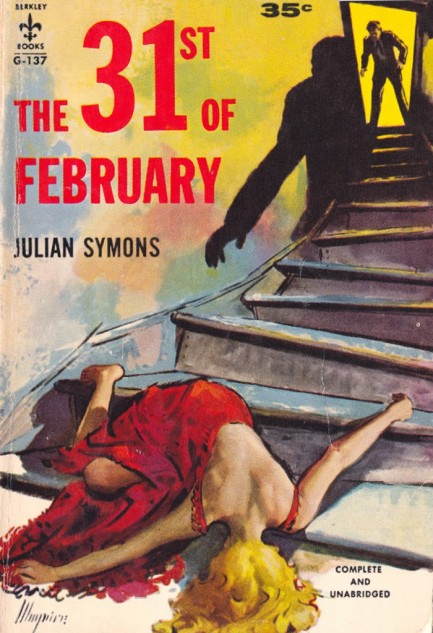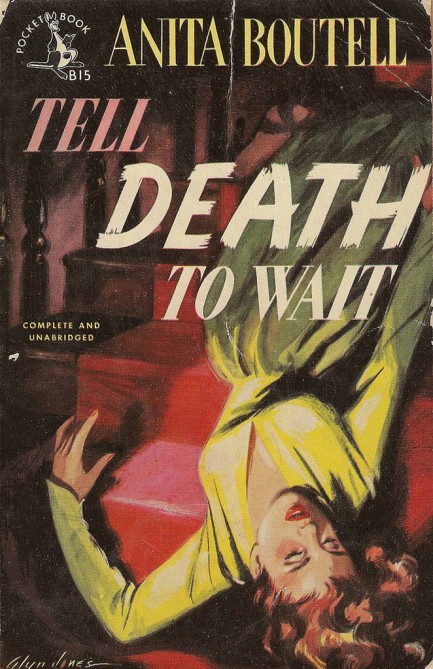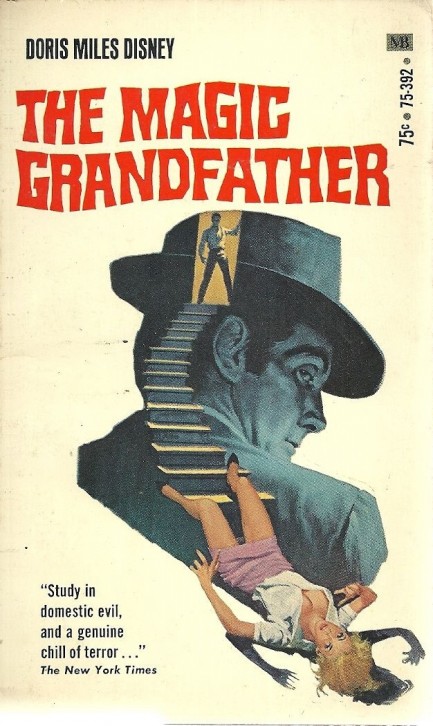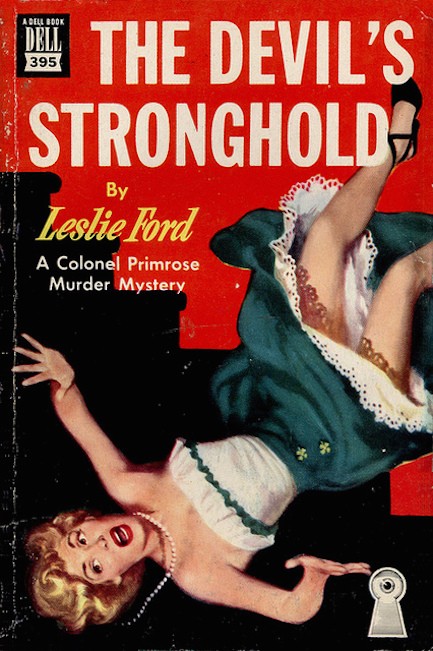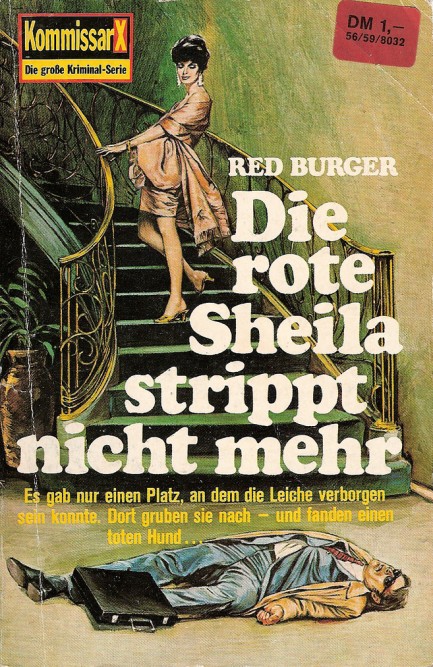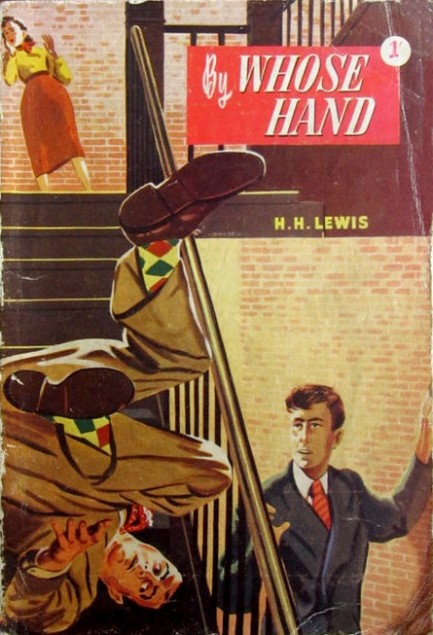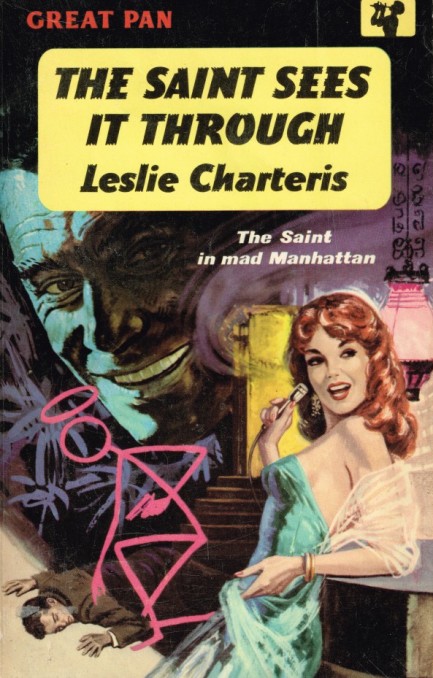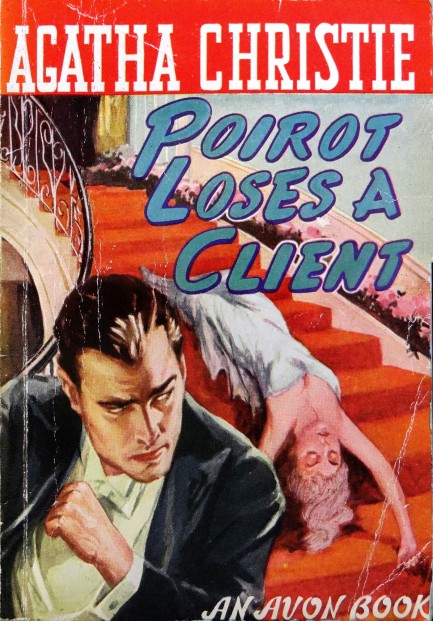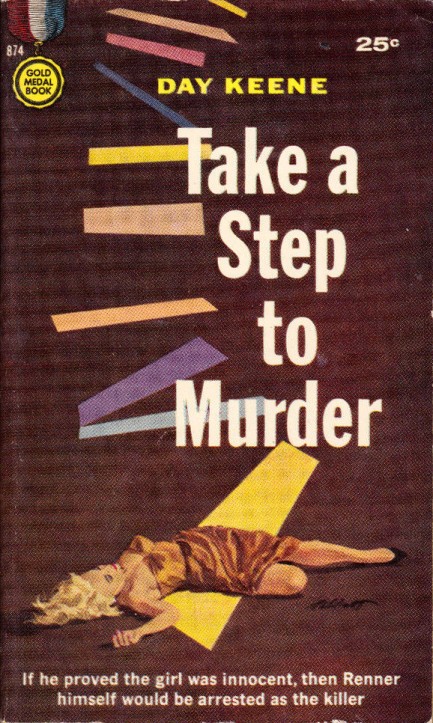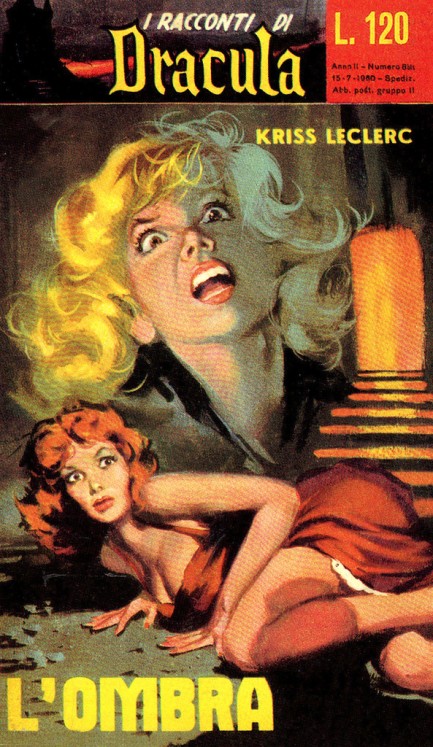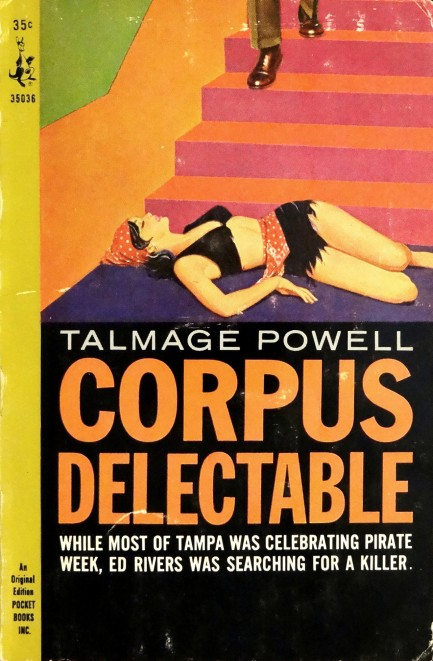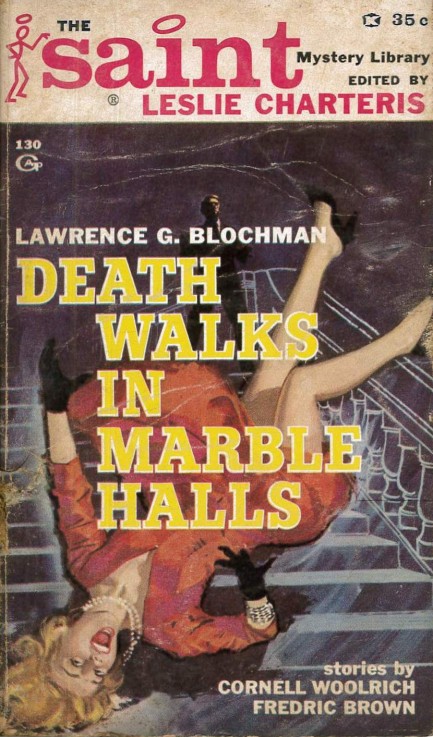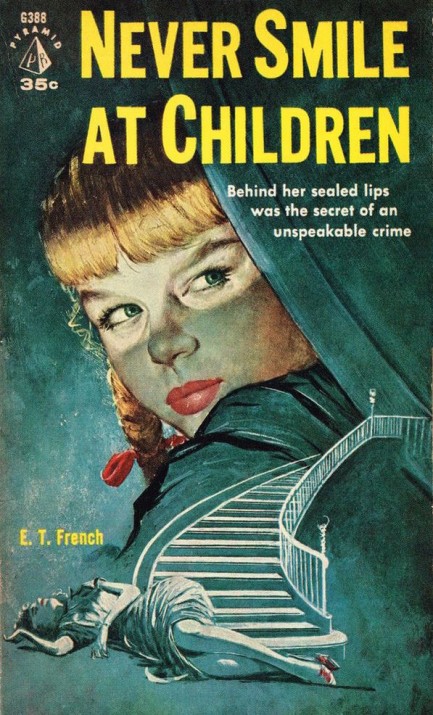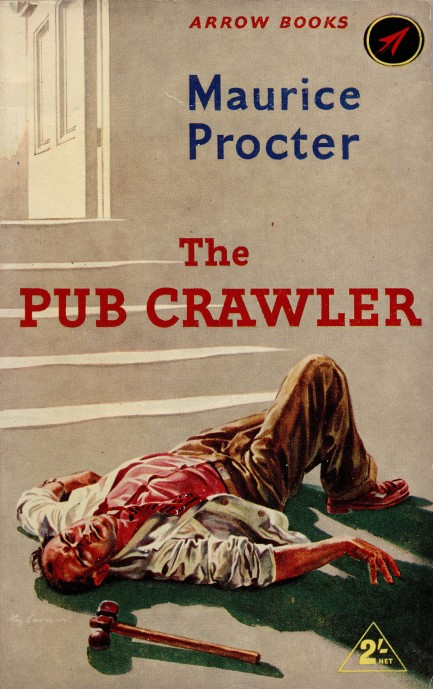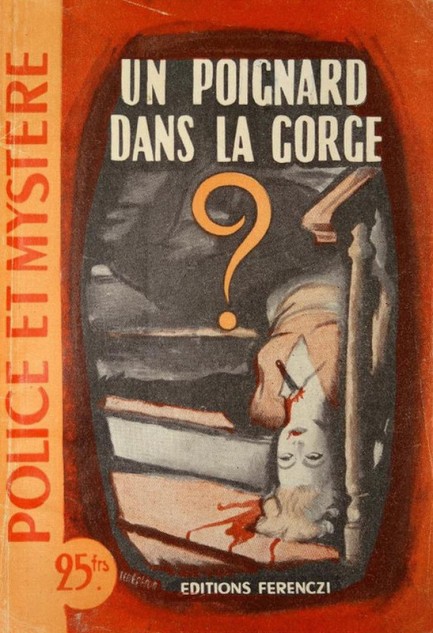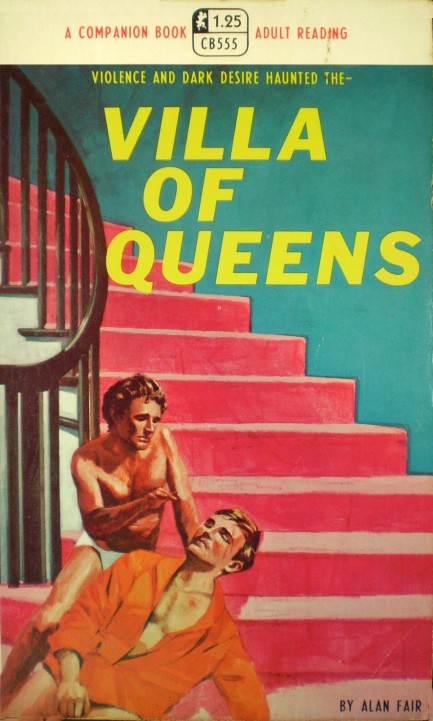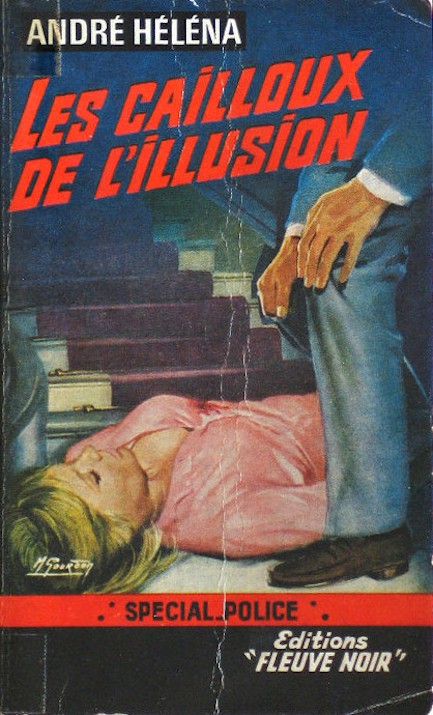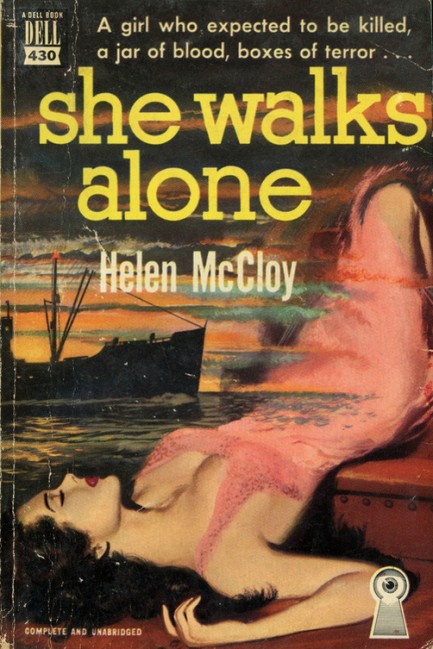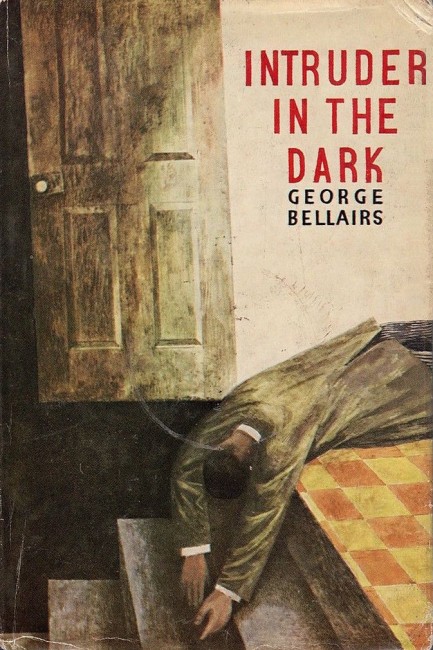 In pulp you're always on the wrong side of the tracks. 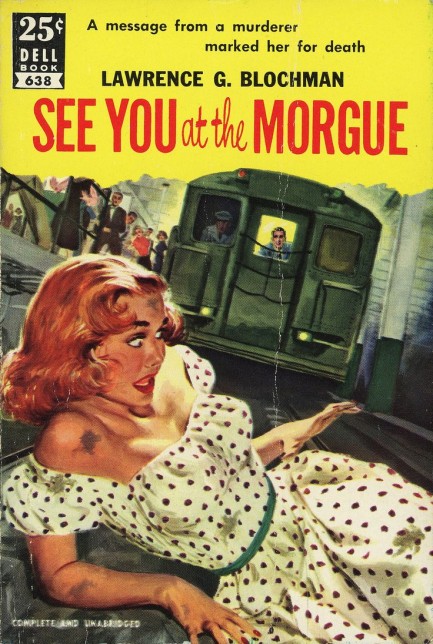
We're train travelers. We love going places by that method. It's one of the perks of living in Europe. Therefore we have another cover collection for you today, one we've had in mind for a while. Many pulp and genre novels prominently feature trains. Normal people see them as romantic, but authors see their sinister flipside. Secrets, seclusion, and an inability to escape can be what trains are about. Above and below we've put together a small sampling of covers along those lines. If we desired, we could create a similar collection of magazine train covers that easily would total more than a hundred scans. There were such publications as Railroad Stories, Railroad Man's Magazine, Railroad, and all were published for years. But we're interested, as usual, in book covers. Apart from those here, we've already posted other train covers at this link, this one, this one, and this one. Safe travels. 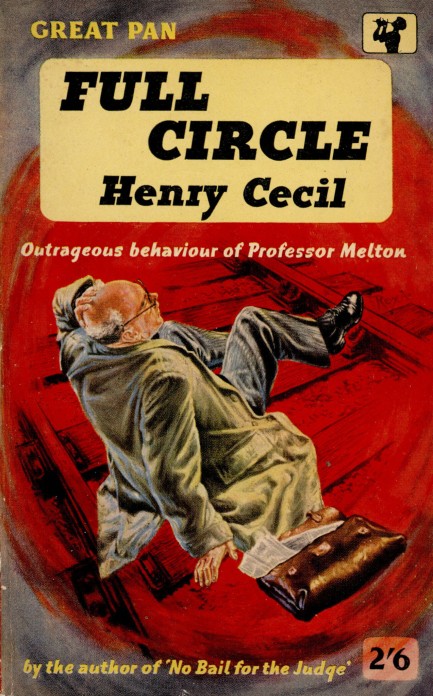 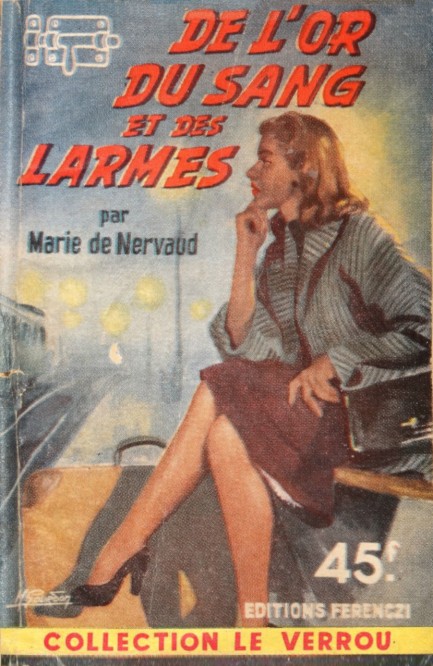 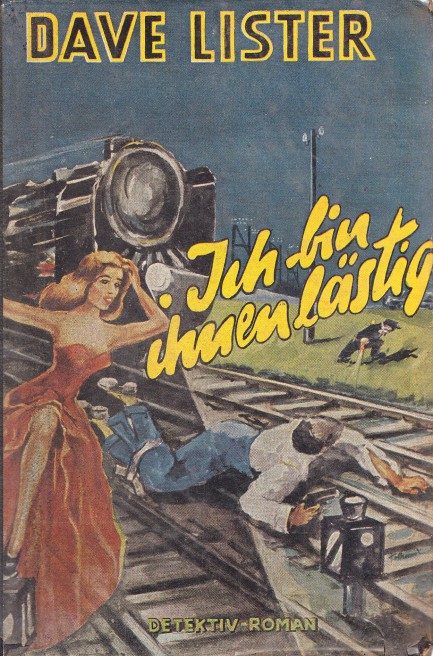 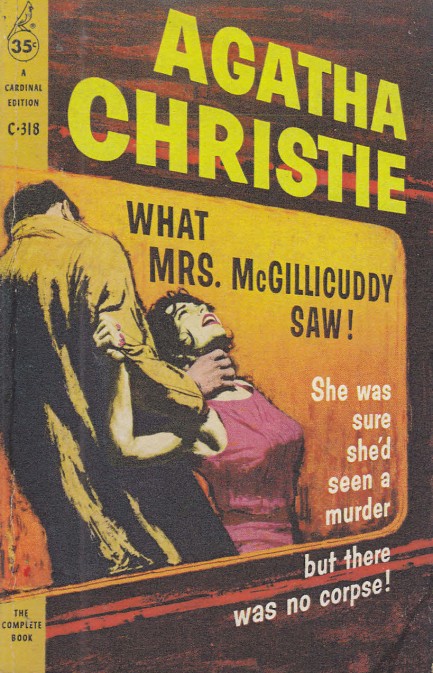 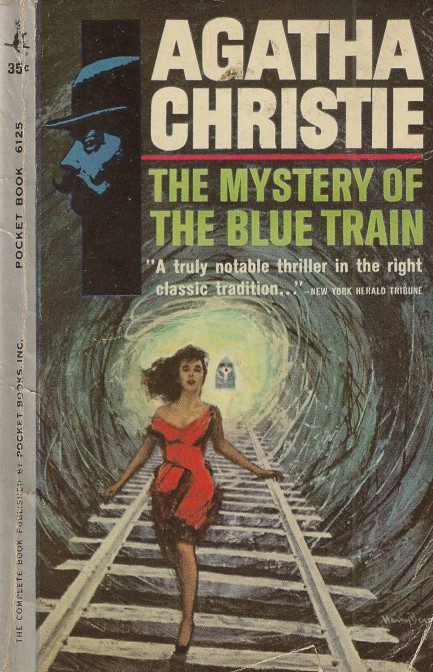 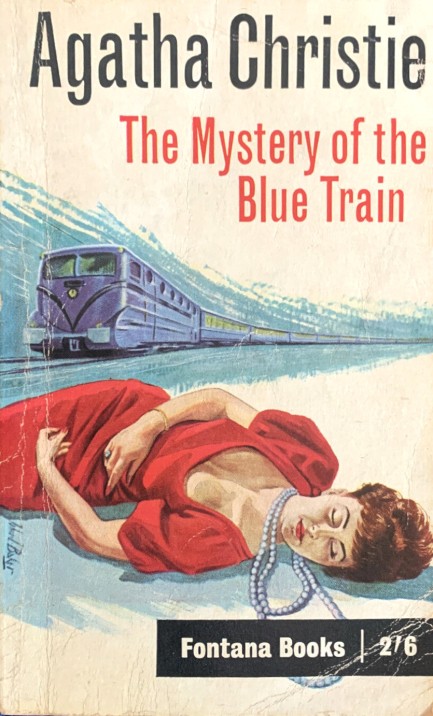  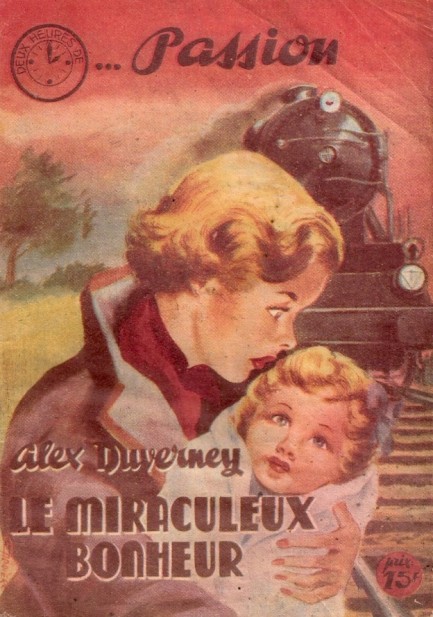 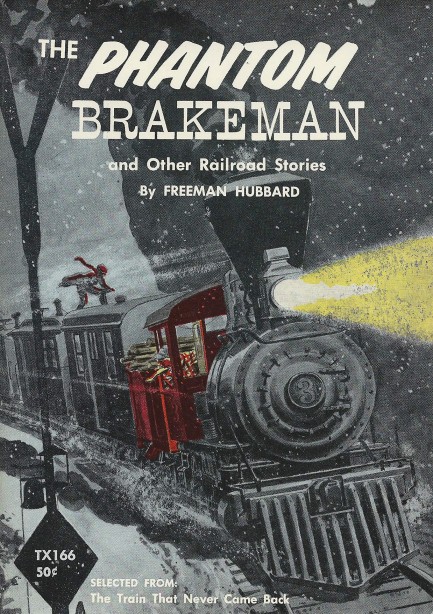 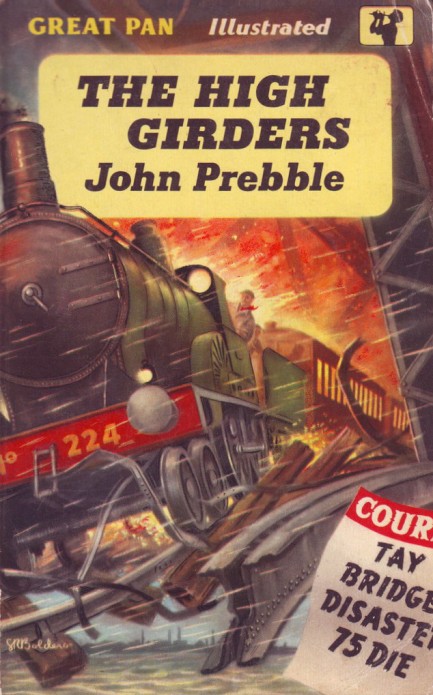 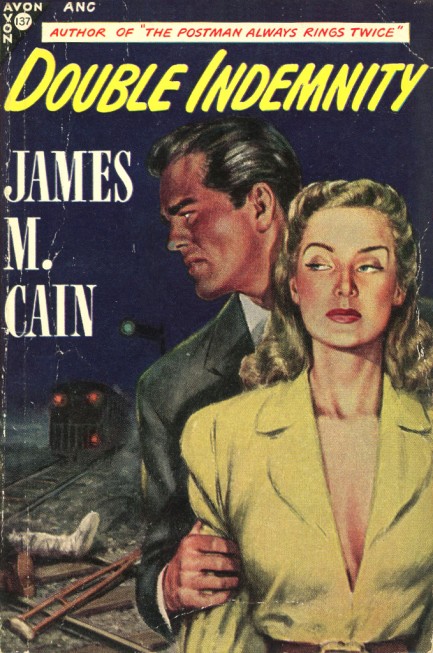 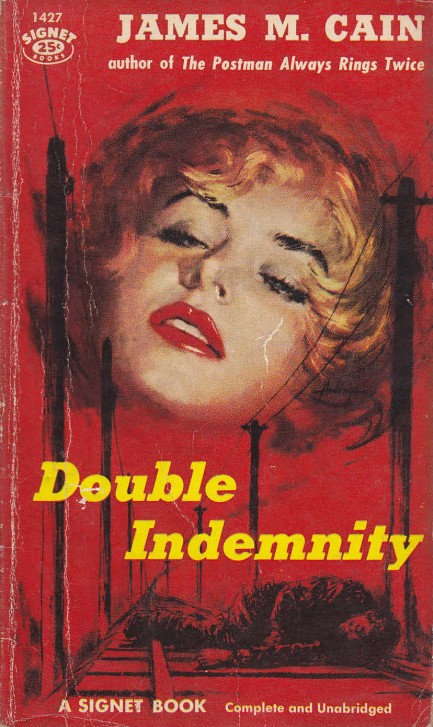 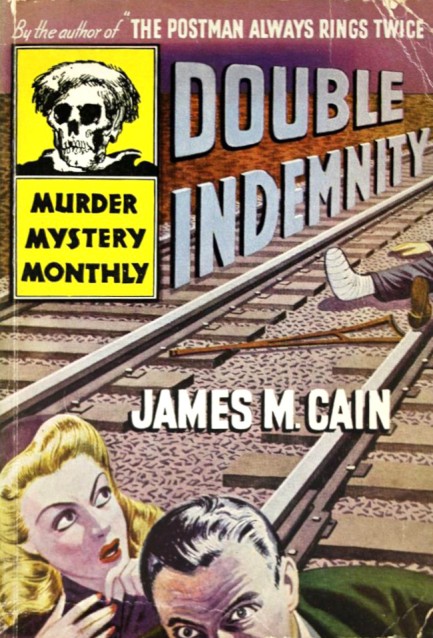 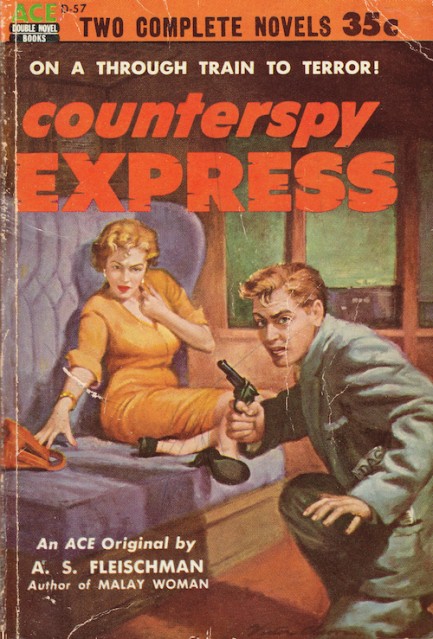 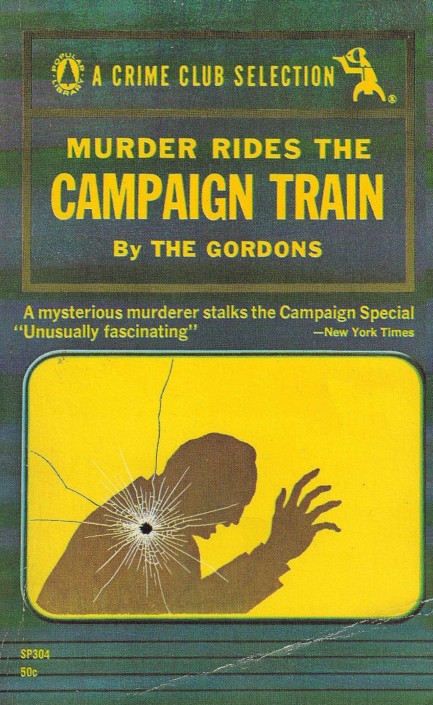 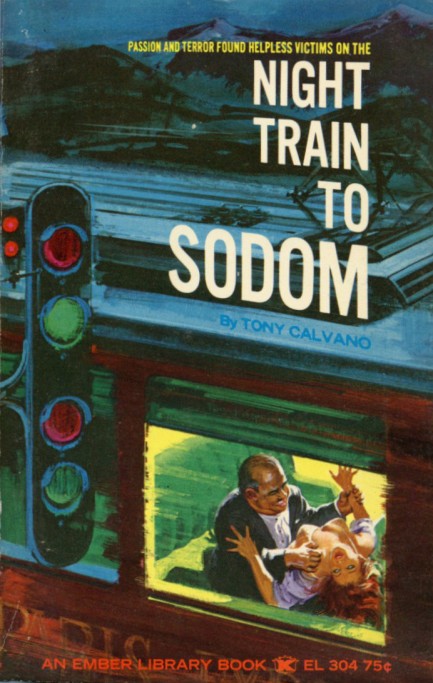 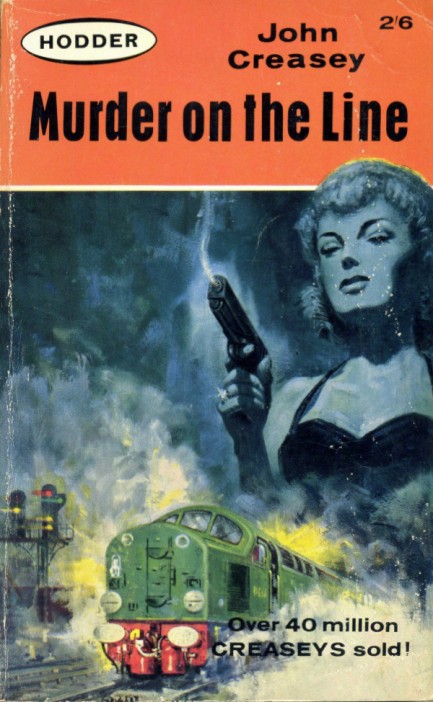 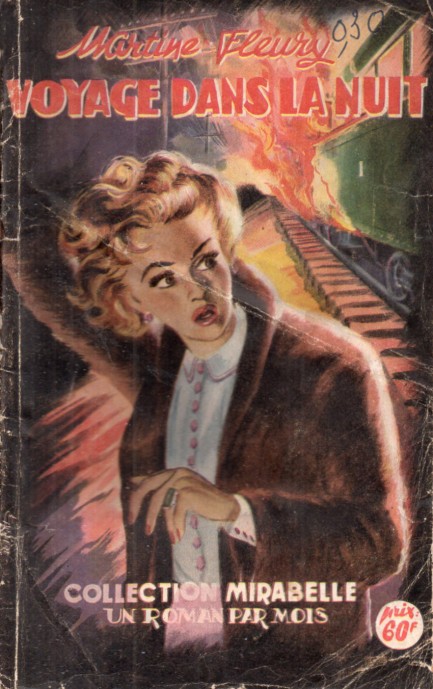 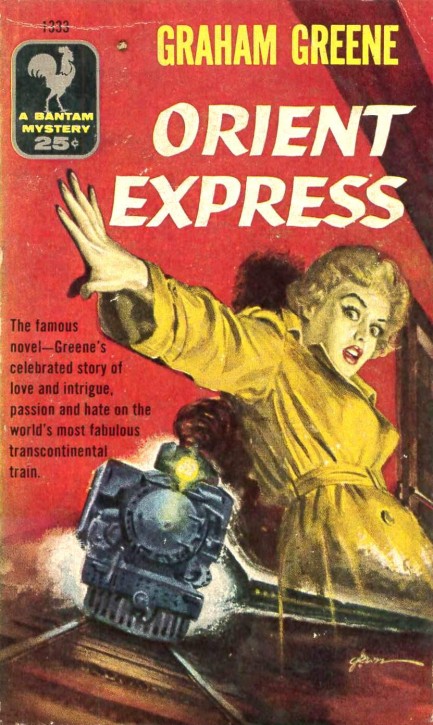 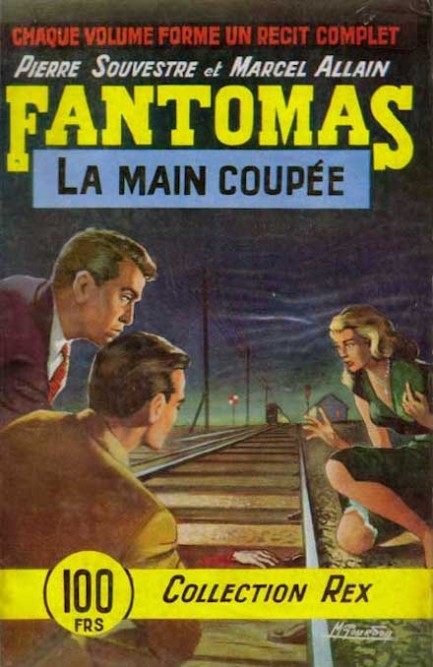 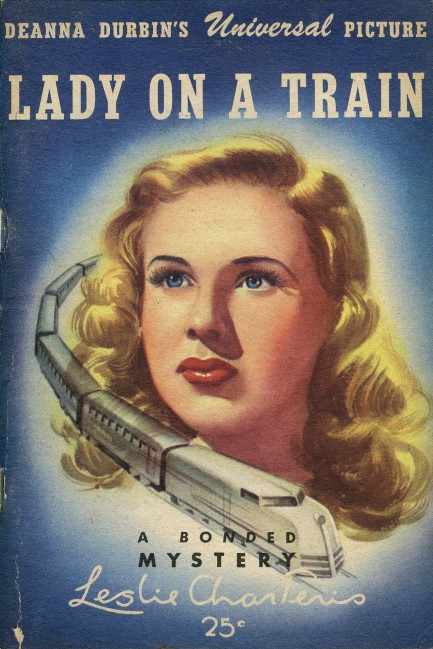  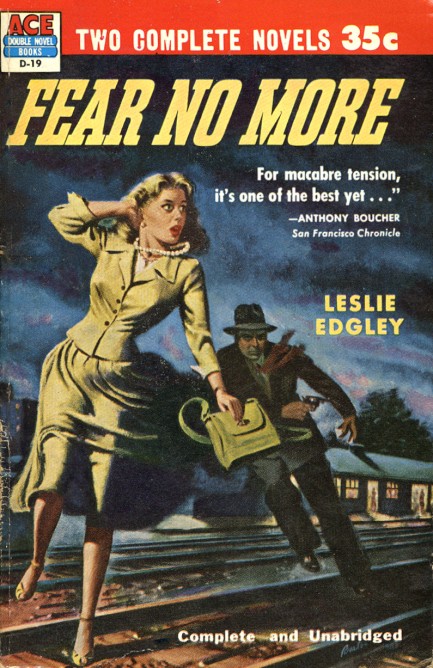 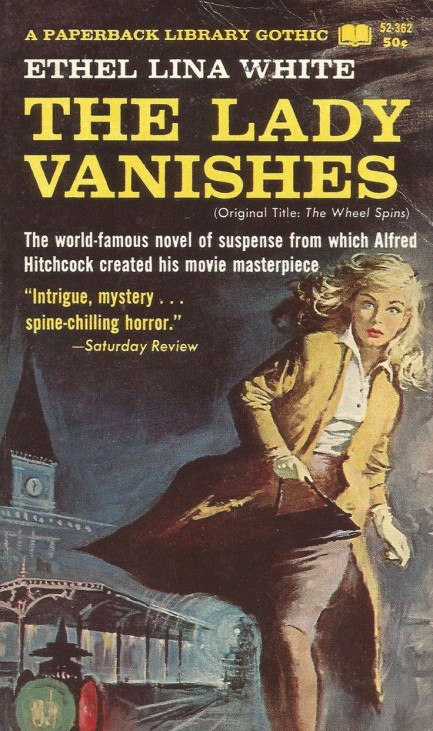 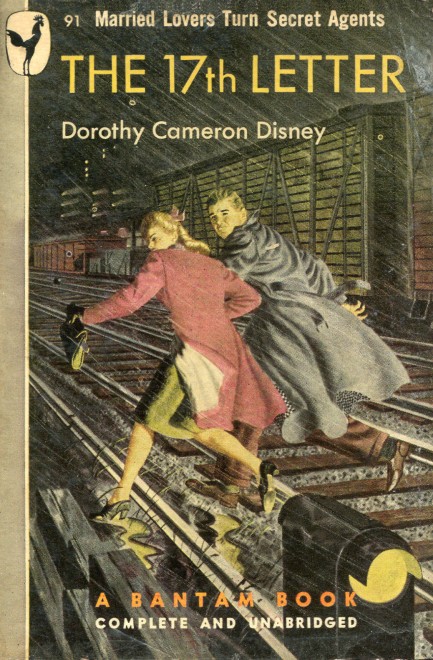 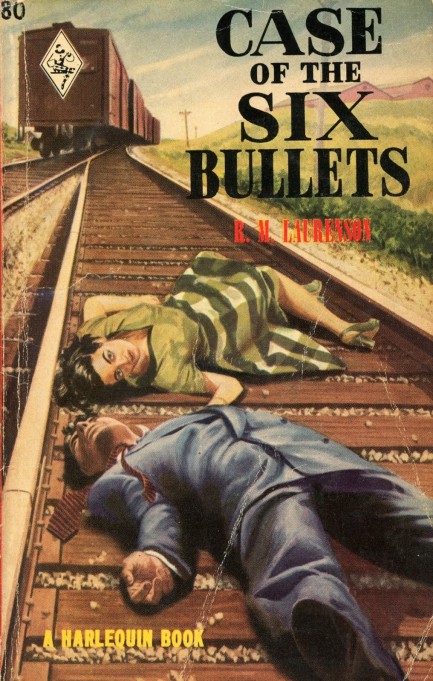
 I'm not usually a quitter! But right now! I'm considering! Going back! To delivering pizzas! 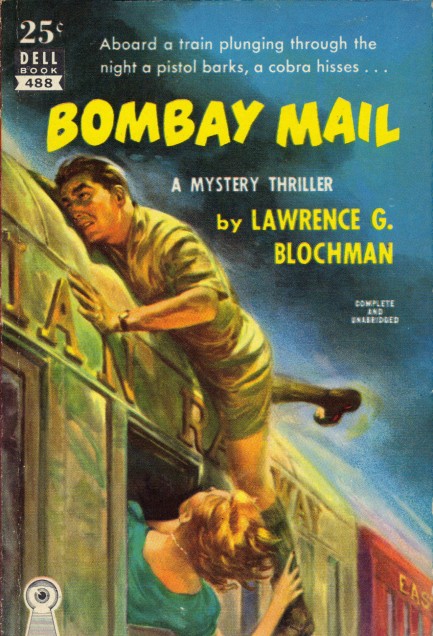
And speaking of trains, above you see the cover of Lawrence G. Blochman's novel of foreign intrigue Bombay Mail, a murder mystery set in India and staged on a Calcutta to Bombay mail train. The lead character isn't actually a postal worker, but rather an investigator, Leonidas Prike of the British C.I.D., also known as the Criminal Investigation Department. This was Blochman's debut, originally appearing in hardback in 1934, which was the same year another celebrated trainbound mystery—Murder on the Orient Express—was published.
About that copyright date, by the way. Nearly every place you look will have Bombay Mail listed as arriving in 1934, but it may have appeared, at least in limited form, in 1933. We deduced this because the movie Bombay Mail, which was based on the novel, premiered in the U.S. in January 1934. We have a hard time imagining a debut novelist selling his book to movies before it hit the stores, so 1933 might be the actual publication date. One thing we're sure about, though, is this Dell mapback edition arrived in 1943, and the art is by Robert Stanley. 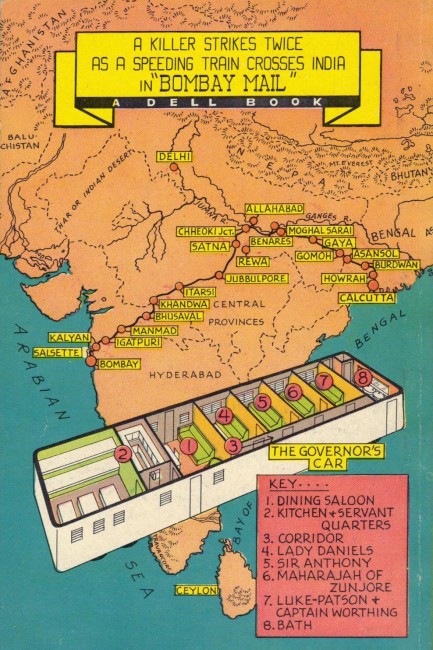
 French publisher Editions Ferenczi had a Verrou unique way of doing things. 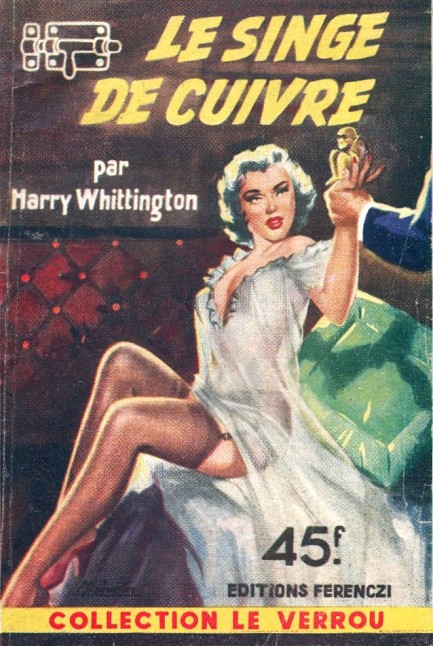
Collection le Verrou (The Lock Collection) consisted of 205 pocket-sized crime novels published in France by Editions Ferenczi from 1950 to 1959. Some were written by French authors using pseudonyms that sounded English or American, while other writers used their real names, such as Alexandra Pecker (yes, that's a real name) and René Poupon (idem). Other books were written by U.S. or British writers and had been previously published. For instance, above you see Le singe de cuivre by Harry Whittington, which you might know as The Brass Monkey, and below you'll find entries from Lawrence Blochman and English scribe Peter Cheney, better known as Peter Cheyney. The art on these books is generally quite colorful. The cover above was painted by Michel Gourdon, and below you'll find another piece from him, many efforts from Georges Sogny, and a couple from as-yet-unknowns. We really like Ferenczi's output, so expect us to share more covers from this publisher later. 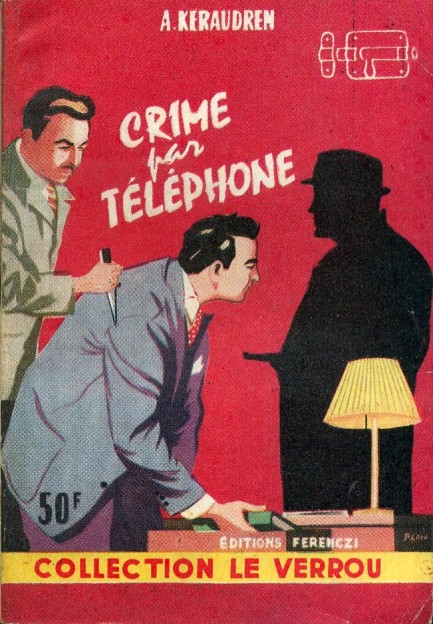 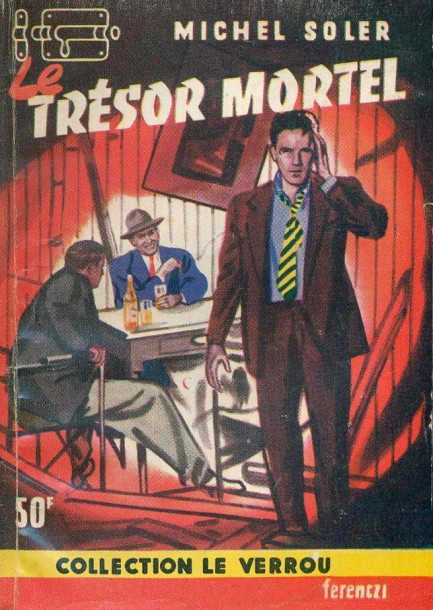 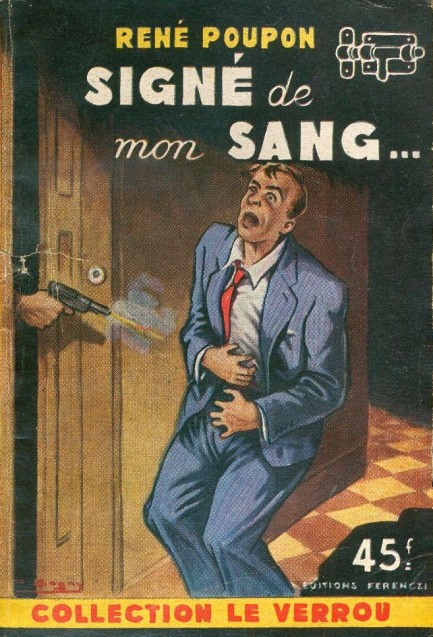 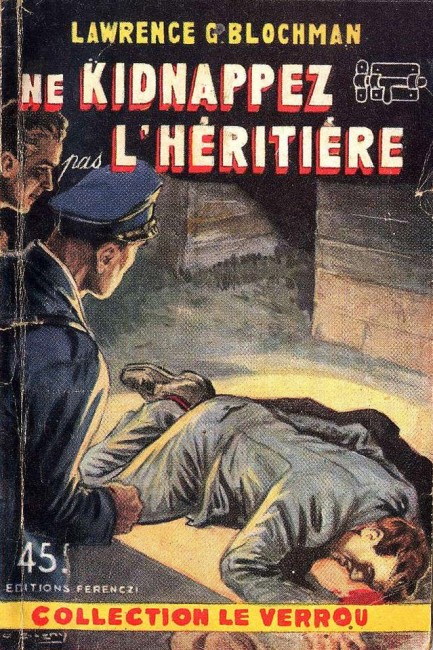 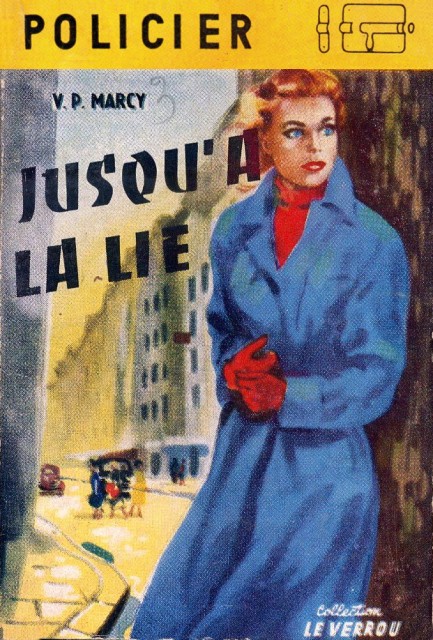 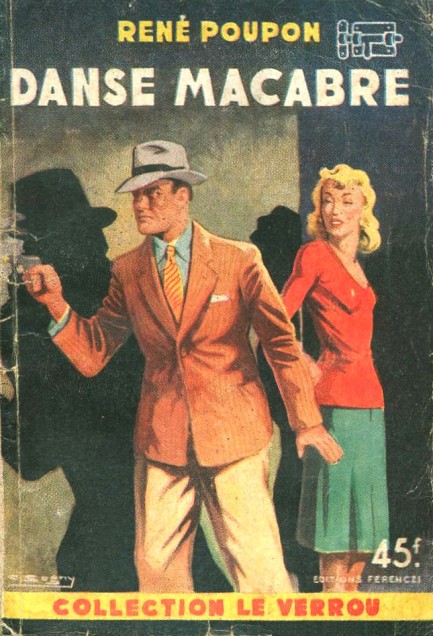 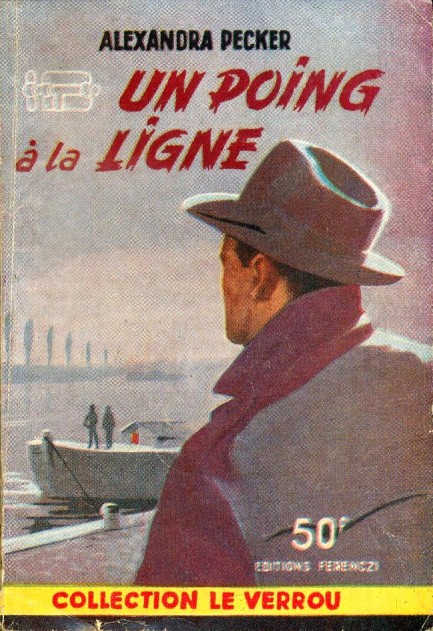 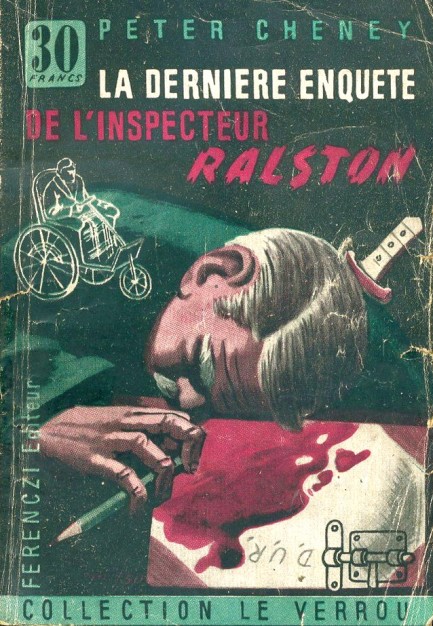 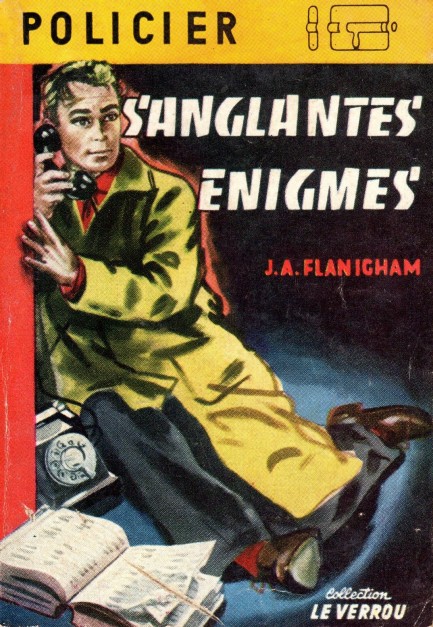 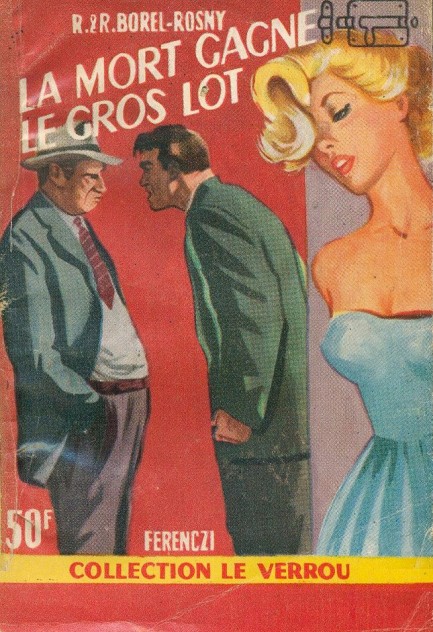 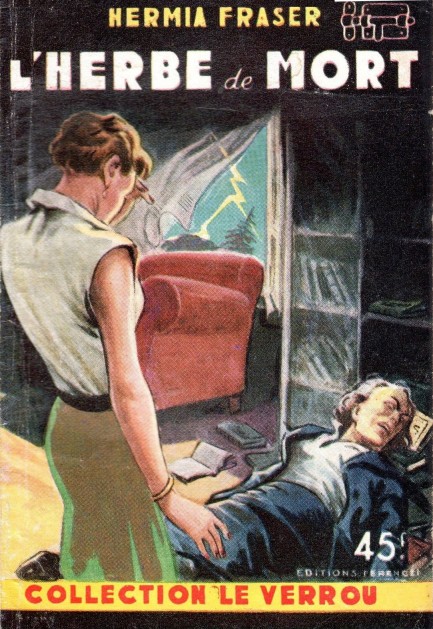 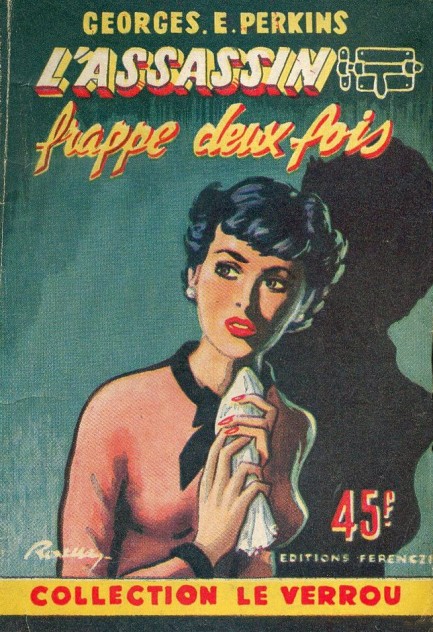 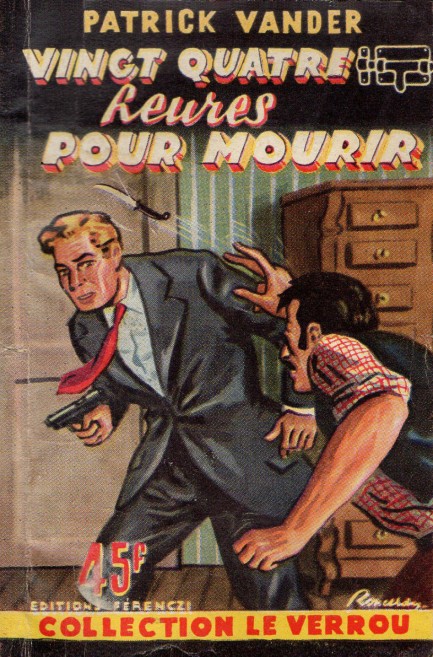 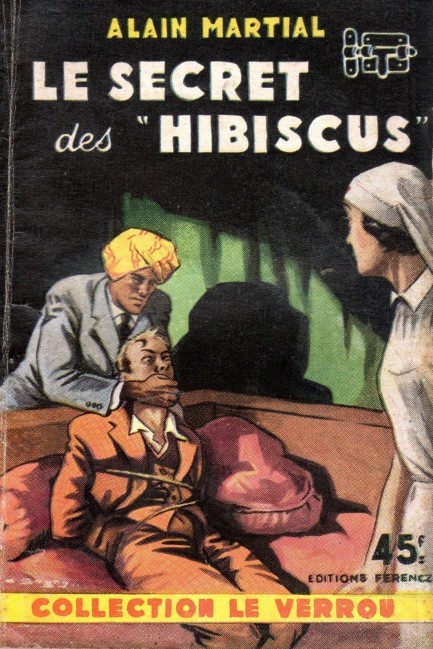
 Why it’s alimentary my dear. 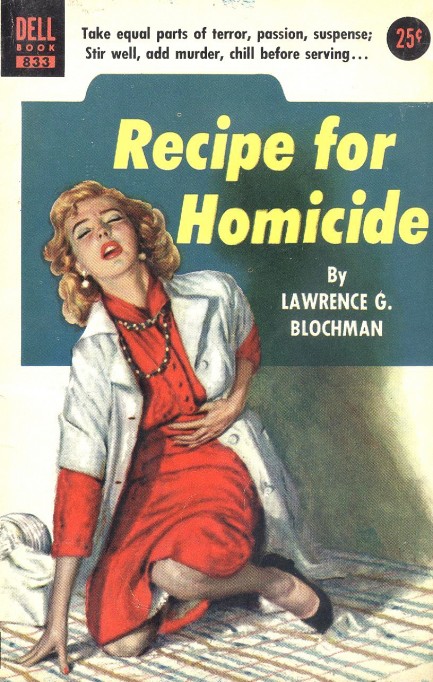
Lawrence G. Blochman wrote mysteries from the 1930s through 1950s, including 1954’s Recipe for Homicide, above. He also penned many short stories, articles and scripts. Recipe is notable for two reasons: it was the first time his pathologist/sleuth Dr. David Webster Coffee appeared in a novel; and it turned a critical eye on American business. The scene is a canning factory, and the heroes and villains are suits, workers, communists, and more. Blochman fans generally tend to think of him as more intellectual than the average pulp author, and based on one book, we can’t disagree. Recipe is scientific detection, and plenty detailed enough for readers who like that sort of thing. We aren’t entirely sure that Blochman’s final assessment about capitalism is warranted (he might have reached a different conclusion had he looked at American business practices in say, the Dominican Republic or Vietnam), but for 1954, this is nuanced stuff. Recipe for Homicide is still widely available, so you can decide for yourselves. 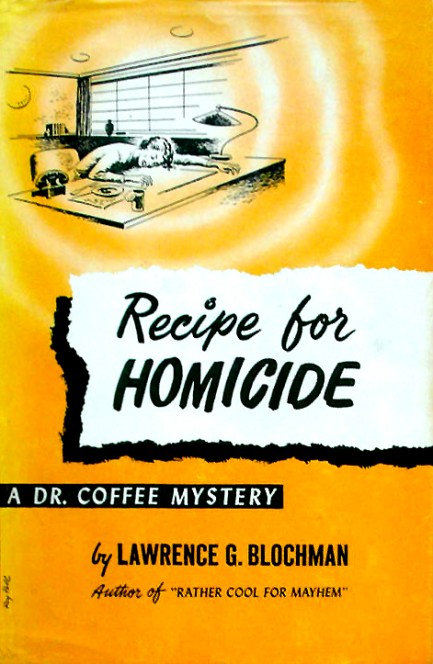
|
 |

The headlines that mattered yesteryear.
2003—Hope Dies
Film legend Bob Hope dies of pneumonia two months after celebrating his 100th birthday. 1945—Churchill Given the Sack
In spite of admiring Winston Churchill as a great wartime leader, Britons elect
Clement Attlee the nation's new prime minister in a sweeping victory for the Labour Party over the Conservatives. 1952—Evita Peron Dies
Eva Duarte de Peron, aka Evita, wife of the president of the Argentine Republic, dies from cancer at age 33. Evita had brought the working classes into a position of political power never witnessed before, but was hated by the nation's powerful military class. She is lain to rest in Milan, Italy in a secret grave under a nun's name, but is eventually returned to Argentina for reburial beside her husband in 1974. 1943—Mussolini Calls It Quits
Italian dictator Benito Mussolini steps down as head of the armed forces and the government. It soon becomes clear that Il Duce did not relinquish power voluntarily, but was forced to resign after former Fascist colleagues turned against him. He is later installed by Germany as leader of the Italian Social Republic in the north of the country, but is killed by partisans in 1945.
|

|
|

It's easy. We have an uploader that makes it a snap. Use it to submit your art, text, header, and subhead. Your post can be funny, serious, or anything in between, as long as it's vintage pulp. You'll get a byline and experience the fleeting pride of free authorship. We'll edit your post for typos, but the rest is up to you. Click here to give us your best shot.

|
|





























![]()
![]()

















